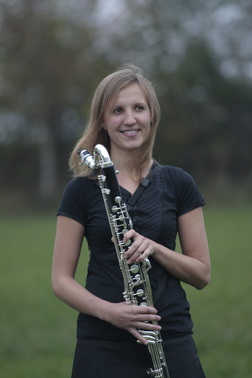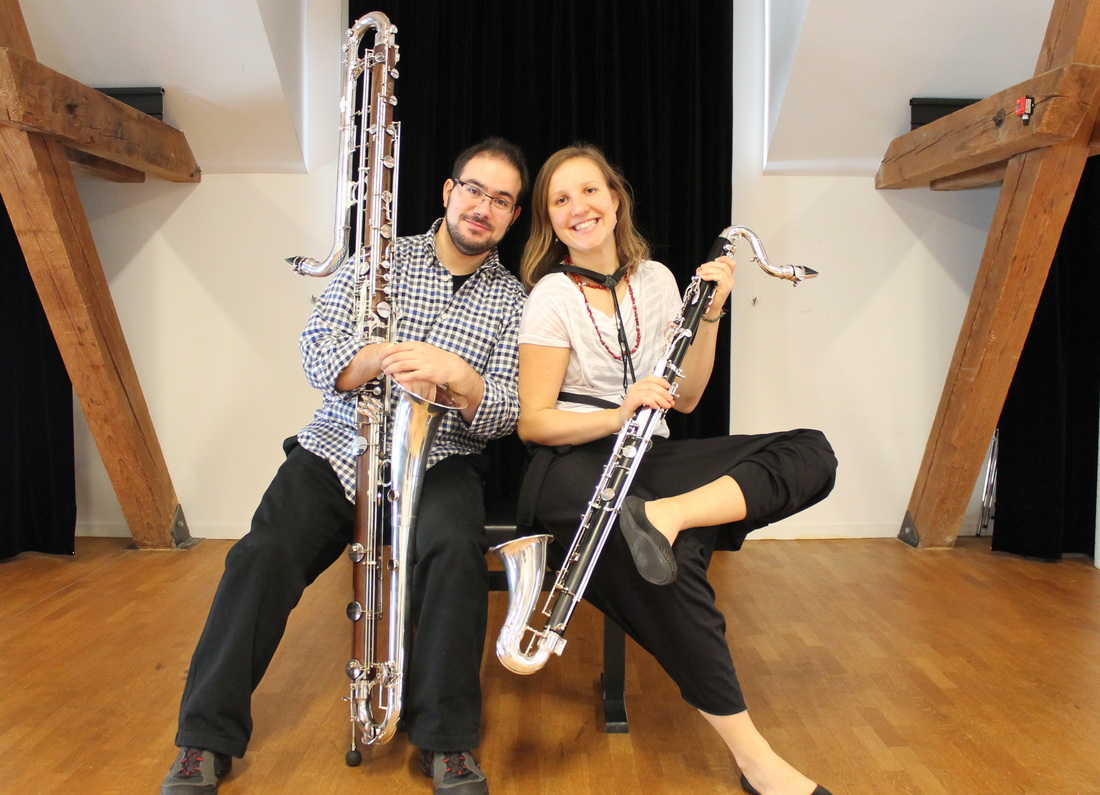(s)low motion
Hugo Queirós & Teresa Doblinger - Bass Clarinet Duo

(s)low motion is the project created by two virtuoso bass clarinetists who want to share this amazing instrument in a new context, using contemporary pieces with new technics but also connecting it with another way of expressing music – the dance. Hugo Queirós and Teresa Doblinger met each other in Bern where they study together bass clarinet under the guidance of Ernesto Molinari. For many years, the bass clarinet was just a secondary instrument used very often in orchestra; since the XX century this had changed thanks to pioneers of the bass clarinet such as Harry Sparnaay, Henri Bok, Ernesto Molinari and others. Thanks to them the bass clarinet playing and solo repertoire achieved a new status being today a principal instrument, very important and very attractive for composers of ontemporary music.
Actually, the idea of being a low instrument and therefore slow is very incorrect and that's what we will show; for that we chose a very diverse repertoire which shows many ways of using this instrument in very different aesthetics, flowing between solo pieces and duos as well as combining our playing with moving.
Furrer’s Apoklisis is written in a stereophonic way, where the composer uses both clarinets with very soft and sometimes high sounds and very low noises that will play with the listeners, who will need to figure out where the sound is coming from.
Time and Motion Study I by Brian Ferneyhough is one of the most challenging pieces in the bass clarinet repertoire; the densely worked and complex textures created on this piece are common in his work, characterized by very complex notation and extremely irregular rhythms.
The piece Spleen is written by Olga Neuwirth. It's a piece for bass clarinet, which is full of strong emotions and impulses. A great tension is built up by extreme contrasts of dynamics and pitches. Anger as well as calm conditions are made audible and sensible by furious outbursts confronting silences and soft passages.
Maknongan by Giacinto Scelsi is, as it's typical in his music, a kind of writing based only on one pitch
which is developed through very small timbrical and dynamic changes; this piece can be played by any low instrument, in this case it will be played on the contrabass clarinet.
(s)low motion is a piece created by Teresa Doblinger. The inspiration for the piece comes from the strong impulse to start moving while listening to or playing music. We will tell a story about the pull of music, about how you get pulled into the music, about how you are having struggles getting into or breaking out of the pull and about how you can unite with music, how it can give you a meaning to life. The piece is organized in two parts – one part for contrabass clarinet and dancer and the other part for contrabass clarinet and moving bass clarinetist.
To finish the concert we will play Sortilége by John Zorn, a powerful duo for bass clarinets that demonstrates the wildest and loudest side of this instrument. Full of slap tongues, extremely high notes and fast passages, this piece will resume the concert and close in full energy and vitality.

Doblinger was born in 1992 in Ried im Innkreis, Austria.
With the age of 9 she started playing the clarinet and changed five years later to the bass clarinet. She had an extensive musical education in her hometown with projects giving many different musical directions until she started studying bass clarinet on the BUA in Bern with Ernesto Molinari.
Currently she is attending the Master of Arts in Music Performance with special emphasis on dance. Having gained great experience in playing in different orchestras she is more and more focusing on playing new music and on combining the bass clarinet with the dance.
She participated in various courses like the „Internationale Darmstädter Ferienkurse“ and the „Impuls Academy“ in Graz. She worked with characters like Harry Spaarnay, Heinz-Peter Linshalm and Petra Stump, Georges Aperghis, Roland Kluttig, Chaya Czernowin and François-Xavier Roth.

